~ 27 ~
~ The Study of Threes ~
http://threesology.org
Researchers as of 8/29/2019
| Devil's Advocate Series: | ||||||||
|---|---|---|---|---|---|---|---|---|
| 1 | 2 | 3 | 4 | 5 | 6 | 7 | 8 | 9 |
| 10 | 11 | 12 | 13 | 14A 14B |
15 | 16 | 17 | 18 |
| 19 | 20 | 21 | 22A 22B |
23 | 24 | 25 | 26 | 27 |
| 28 | 29 | 30 A | 30 B | 31 | 32 | 33a | 33b | 33c |
| 34 | 35 | 36 | 37 | 38 | 39 | 40 | 41 A | 41 B |
Let me begin this page by indulging in some generalizations:
Mythology is an interesting brand of comparative anatomy, biology, sociology and a few other "ologies" if one invested a bit of imaginative overlay of "serious" academic exercises and practices to its genre of its sometimes anthropomorphized articulations. Given the many stories of animals and humans with different types of body parts and attributes, one must either conclude that ancient peoples were either imaginative, on some sort of drug, was delirious from a lack of nutrition, were infected by a disease, or that such creatures actually existed. If we give ancient peoples the benefit of a doubt, perhaps there were three gorgons, three fates, three furies, a three-headed dog named Cerberus which guarded the gate to the underworld (Hades), fire breathing dragons that may or may not have flown in groups of two or three... or more, and people or beasts with two heads such as the fire-god Agni, or a multi-headed hydra and an existent world consisting of a three-patterned ensemble of hell-purgatory-heaven, or some variation thereof. Unlike Asians who have infested some interest in claiming large number variations in particular cases, all the other cultures appear to express largeness in terms of words like giant, monster, great, immortal, The One, The True, The Divine, etc., or invent a reference such as poly, along with the language equivalents of much, many, and more (that might be described with a term such as "thousand" or other Big numbers used in Chinese).
Here are a few ancient Greek triple figures (often adopted by the Romans):
- Three Fates (or Moirae), named Clotho, Lachesis, and Atropos, who were the daughters of Zeus and Themis. (The ancients believed that the duration of human existence and the destinies of mortals were regulated by these three sister-goddesses.)
- Three Harpies, named Aello, Ocypete, and Celaeno, were (like the furies) employed by the gods as instruments for the punishment of the guilty, were the daughters of Thaumas and Electra.
- Three Furies (or Erinyes), named Alecto, Megaera, and Tisiphone, with their origin variously accounted for. These female divinities who personified the torturing pangs of an evil conscience, and the remorse which inevitably follows wrong-doing.
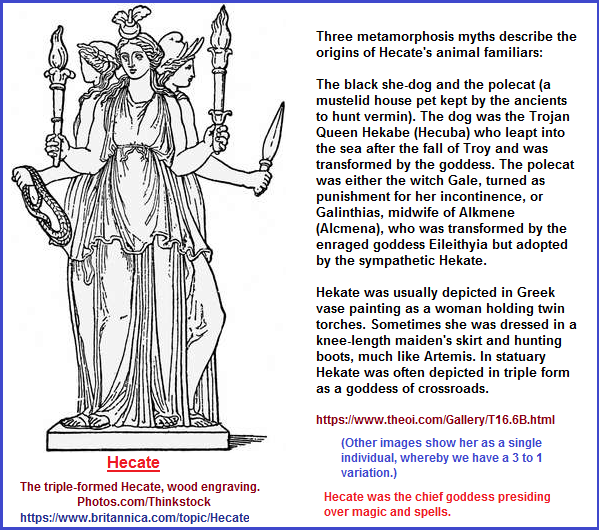
In an attempt to construct some "2-3-4" representation of occurrence in ancient Greek Mythology, the "2" could be illustrated by the Character Janus, the "3" by Hectate, but the "4" takes on a non-human form in the idea of a 4-directions concept.
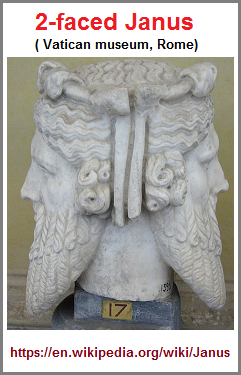
And let me add one more 2-3-4 ensemble related to mammalian dentition:
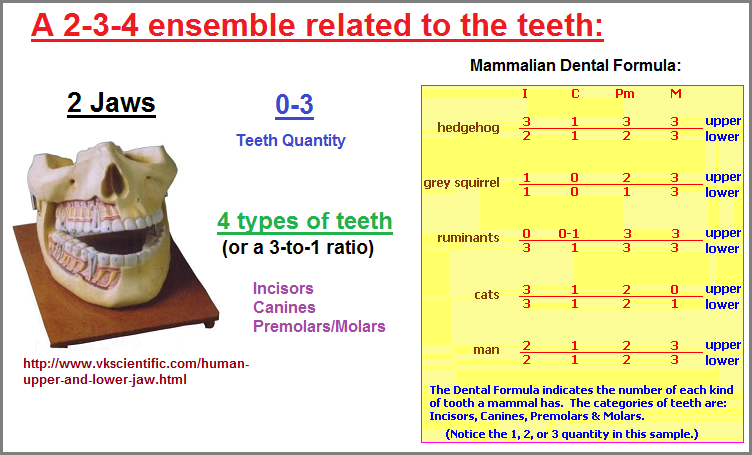
- Three worlds of Norse Mythology: Asgard- Midgard- Niflheim: New World Encyclopedia: Norse Mythology
- Three triplet brother in Japanese traditional belief that roam around cutting people’s legs off: Named Kamaitachi, Kintaro, and Gashadokuro. The first brother knocks someone down, the second cuts off their legs and the third stitches up the wounds. Three mythical figures in Japanese traditional belief
- Three lovers: Famous characterization of an Infamous lovers triangle. Love Triangles
- Triple variations: Wikipedia: Triple
- Three basic shapes of bacterial cells: Coccus (spherical), Bacillus (rod-shaped), Spiral (twisted). However., pleomorphic bacteria can assume several shapes. different Size, Shape and Arrangement of Bacterial Cells
- Three basic shapes of a Virus' capsid (protein shell): Icosahedral- Filamentous- Head-tail: Khan Academy: Intro to viruses
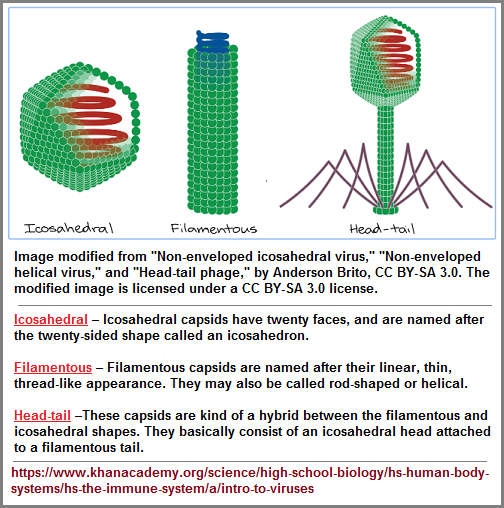
In addition, with respect to a from simple-to-complex developmental "strategy" (or environmentally triggered stressor/s): All viruses contain the following two components: Virus Structures
- A nucleic acid genome.
- A protein capsid that covers the genome.
And up the 'viral chain' of development, so-to-speak, we find that many animal viruses contain a third component:
- A lipid envelope.
And let me not fail to mention those accounts which say there are four different shapes to viruses (or should we categorize them as a three-to-one ratio?):
- filamentous
- isometric (or icosahedral)
- enveloped
- head and tail
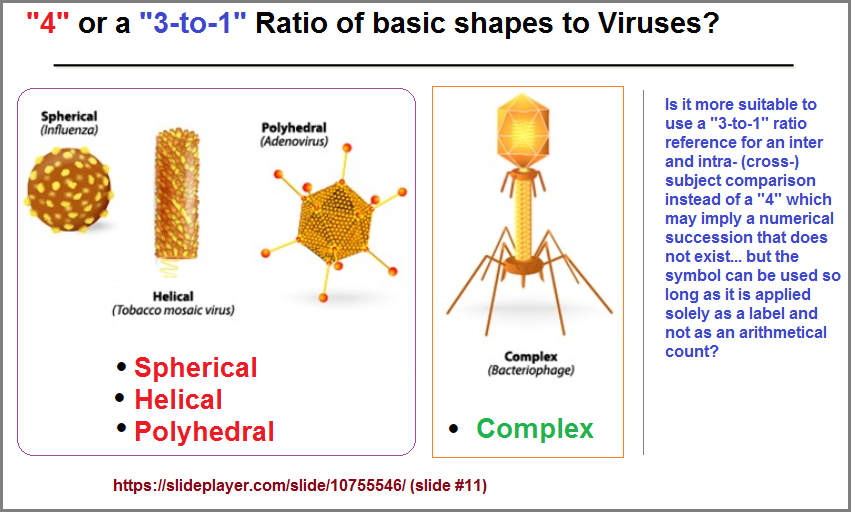
- Three theories of infinite Earths: Infinite Universe- Many Worlds- Possible Worlds: Three theories of infinite Earths Sponsored by Starz
- Three main spheres of the Earth: Atmosphere- Hydrosphere- Lithosphere: 3 Major Sphere Divisions of the Earth's surface by Shreeja D
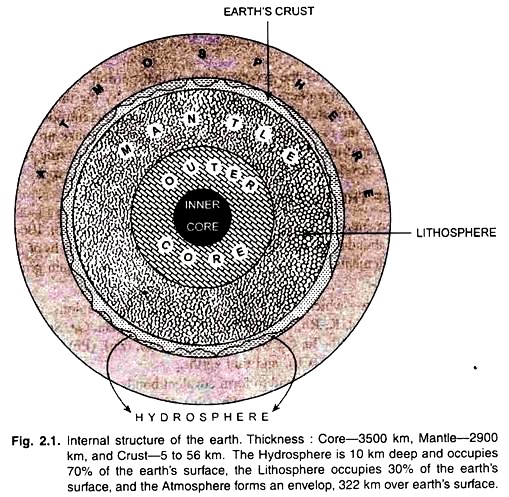
- Three general divisions of the Earth: Core- Mantle- Crust.
- Three shapes to the Universe: Flat (Euclidean or zero curvature), Spherical or Closed (positive curvature), Hyperbolic or Open (negative curvature): Geometry of the Universe
Here are three examples of a 2-3-4 configuration that could be placed on page 14 of this series (though I am not explicating the 2-3-4 configuration), but are being used here to highlight a recurrence of the three model:
- Three families of fundamental atomic particles: The existence of three families of fundamental particles may result from our universe behaving like a topological insulator, according to a theoretical proposal.
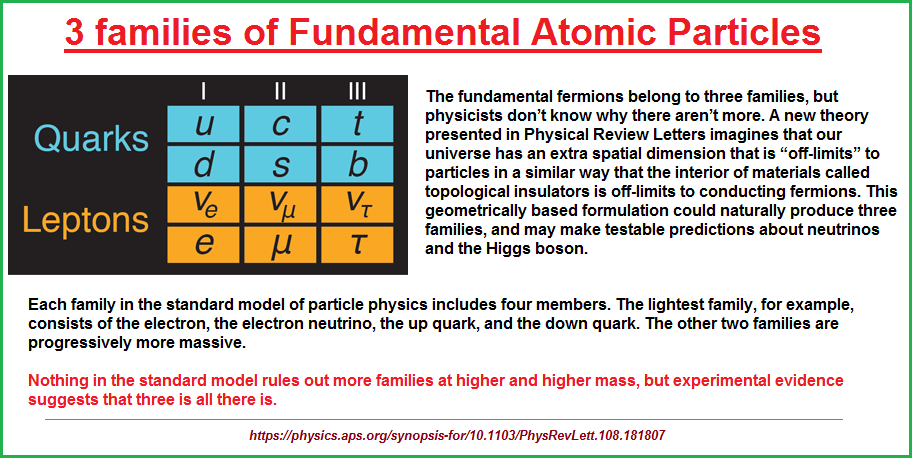
- Three coded language in genetics: Scientific experiments have verified that nucleotides code for amino acids in successive groups of threes. These groups of threes are called codons. (Not to mention 3 stop codons and 1 start codon). Spark Notes: The Genetic Code.
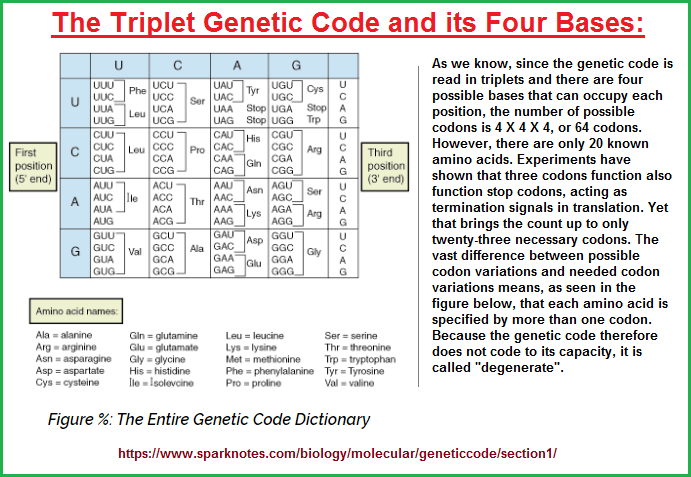
- Three categorical syllogism (with four moods): Triads in Genetics, Logic, Music page 1
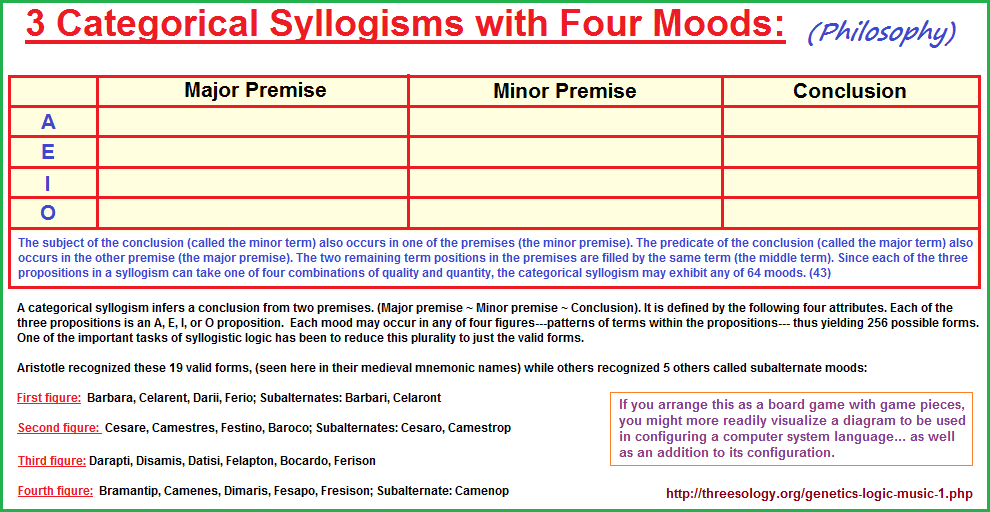
- Three brothers ruled their own worlds: Zeus – ruler of the sky. Poseidon – ruler of the sea. Hades – ruler of the underworld; Their equivalents in Roman myth were Jupiter, Neptune and Pluto. Number 3 in Greek Mythology
- Three rooted Yggdrasil tree with three wells: Norse Cosmology Wikipedia: Yggdrasil
- Three Muses (sometimes described as a 3 X 3 or nine variety): According to Pausanias in the later second century AD, there were originally three Muses, worshipped on Mount Helicon in Boeotia: Aoide ("song" or "tune"), Melete ("practice" or "occasion"), and Mneme ("memory"). Together, these three form the complete picture of the preconditions of poetic art in cult practice. They are considered the source of the knowledge embodied in the poetry, lyric songs, and myths that were related orally for centuries in ancient cultures. Wikipedia: Muses
- Three Judges of the Underworld: Minos, Rhadamanthus, and Aeacus.
- Three Charities (three graces): Euphrosyne, Aglaea and Thalia.
- Three Graeae or Graiae both: named Deino, Enyo, and Pemphredo who were the daughters of Ceto and Phorcus. They were the personifications of old age; born with gray hair and only one eye and one tooth among them. They were the protectors of their sisters, the Gorgons.
- Three Gorgons: Euryale, Medusa, and Stheno; had snakes for hair; their glances turned mortals to stone.
The peoples of India and elsewhere, while having specific "threes" assigned to a given religious orientation such as Brahma, Vishnu and Shiva, or the Christian Trinity, also like to speak in terms of twos, fours, eights... like the Yin/Yang duality, four noble truths, and eight-fold path. Though one might also encounter numbered references being used in ancient cultures of Europe assigning importance to the duality of the Adam and Eve origination, four directions, four horsemen of the Apocalypse, four seasons, (a) god resting on the seventh day, or seven planets, a seven-colored rainbow, or nine angels.
Many readers no doubt have come across other examples as I have, and may or may not have also observed the presence of a hierarchical system being used. A sort of pecking order or chain of command or filing system like we see occurring in the stratifications being employed in various ways for different subjects sometimes referred to as a taxonomy, meaning a type of hierarchy such as to express a type of order, ranking or value which may represent one or more of the following dichotomous representations or their reversed ordering, often involving a middle term (not shown here), that may or may not be accompanied by multiple sub-divisions such as those encountered in the typical sociologically-driven analysis of class divisions;
- lower to higher/upper
- bad to good
- imperfect to perfection
- simple to complex
- wrong to right
- darkness to lightness
- down to up
- there to here
- close to far
- ignorance to intelligence
- small to large
- slow to fast
- etc...
Here is a typical schematic of hierarchical ordering found in biology. I had to invert the image because my brain characteristically flips images around, as well as overlays them, along with morphing them in different directions, as if my brain has some intermittently occurring hallucinogen creating inter-relationships, digressions, convergences, splits, separations, etc... When I was young, I thought everyone did this so I never spoke of it and no one else did because it occurred so often that I figured it was too commonplace to mention and that it was generally taken for granted by everyone. Later on however, after mentioning it to a few so-called friends who I came to find out did not appreciate visualization, their insecurities sought to disparage me to build themselves up by describing this ability as being weird, strange or that I was either sick or on some drug. Like the time when upon listening to a radio the music vanished and all I could hear were the words. Hence, I am not particularly interested in music, (though we are bombarded by it at stores, television, cell phone rings, blaring car stereos, movies, neighborhood concerts, etc..); except I do like music theory... sometimes when I'm in the mood to study it as a form of entertainment.
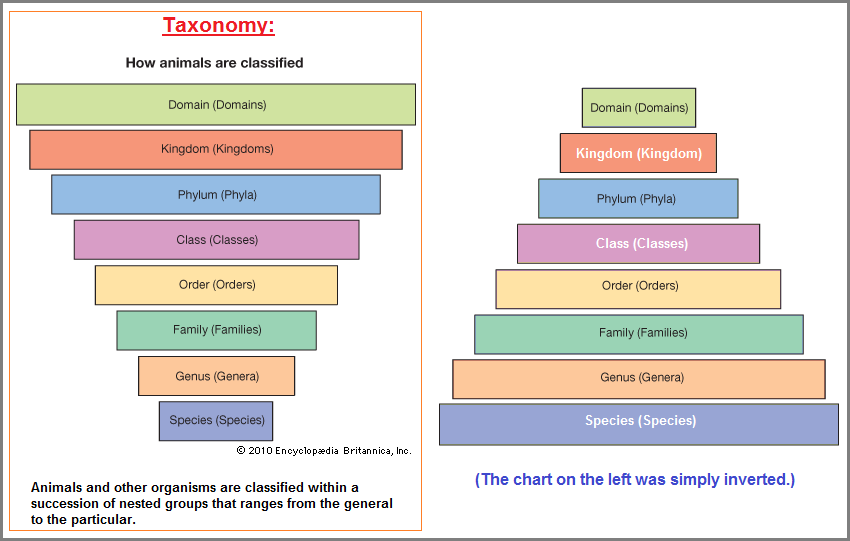
For those familiar with different writing behaviors that are sometimes used either consciously or unconsciously as a personal technique, the slow to fast, beginning to end, small to large, simple to complex, hate to love, etc., models may be employed. Sometimes a writer may indulge in a bit of preliminary repetition in that they recite the ending or some comment on a former page so as to draw a reader back into a particular frame of reference. Such writers are often more interested in book sells than those who are trying to sell an idea to promote a larger appreciation of that which may be helpful in enlarging one's grasp of a given topic, that we see today requires a knowledge base of multiple subjects, though public school curriculums generally try to teach students to recognized inter-relationships amongst different subjects. Anyway, that is the hope... even though most students take information in to apply it to a selective focus to apply it to that which may assist them in getting employment. Generalists who do not formulate some specificity are sometimes found wandering from subject to subject like a happy-go-lucky gypsy. They have not yet found a niche, and may instead find employment in something that provides an income but is miles away from their once applied energies in an intended academic focus.
However, I like generalists because they can bring to the table of discussion a wide variety of alternative considerations that can be used to increase the knowledge base of applying a "threesological" theme to a timeline that differentiates multiple subject orientations into a larger system of classification for the purpose of analyzing the types of analysis to see which patterns are being used repeatedly, and those which are absent or intermittent. Granted there is no actual money being exchanged for their collaboration, many of them have long come to accept the reality that what they have stored in their knowledge base may be useful and can be applied in different contexts for different reasons, they generally do not get paid... but are somehow rewarded for efforts by way of an applied philosophical interpretation. Those of us who appreciate the situation they are in also appreciate their contributions.
Let us take another look at the preliminary timeline chart in which I added the reference of the feeding/excretion events where researchers have noted the absence of what is described as a "hole", with the later development of one hole and two holes, while some body plans exhibit what is described as multiple holes. As one can see, the timeline chart is getting pretty crowded, though the size is constrained by the limitations imposed on the usage in the context of trying to maintain a small size for the purposes of an attempted fast uploading with a slow connection speed.
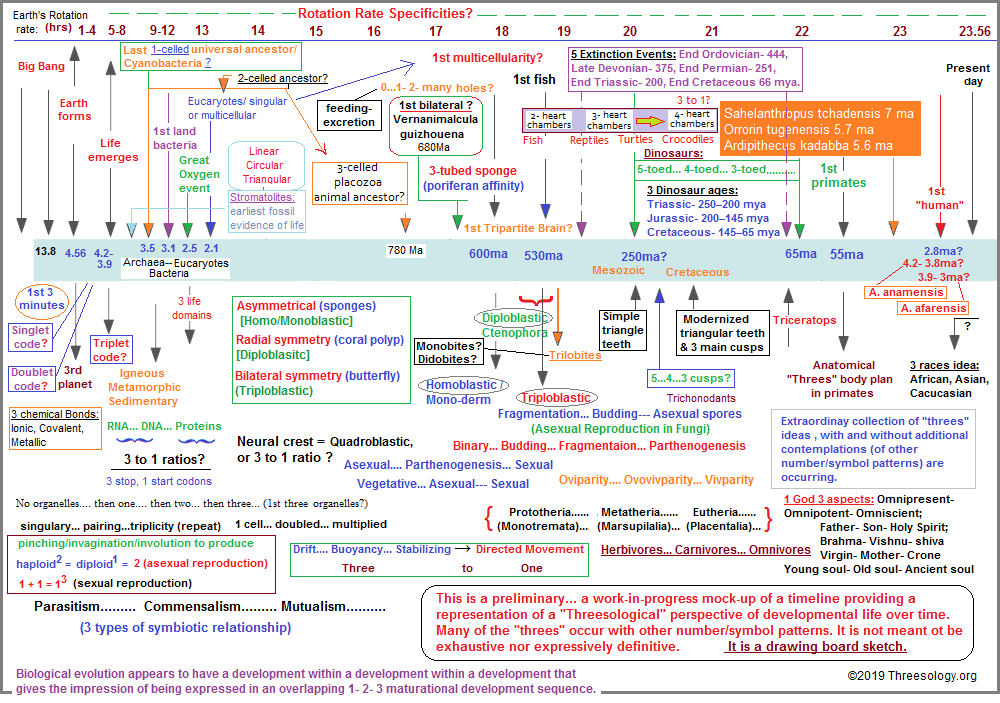
Do the listed patterns actually exist in the subject matter, or are the patterns merely contrivances by a human brain based on a biology subjected to an incrementally deteriorating environment that is forced into reflecting a constraint exhibited by a recurrence of a few patterns which describe an attempted effort to maintain some semblance of an equilibrium? Why are there no large enumerated patterns and only a handful of small numbered patterns being repeated, like the recurrence of a triple code in DNA which seems to be exempt from an evolution involving a larger enumerated pattern? Why stay with a triplet code and its variety of triplet-coded life forms and not change the types of life forms in accordance with an enlarged coding system? What is forcing the constraint? Is it something in the environment that is vulnerable to a dramatic all-at-once change from circumstances within or outside the planet and/or planetary system? Indeed, why stop at developing only two arms when people often use their mouth or a tool belt as an additional hand or arm? Would we be better off if we actually three or more eyes instead of claiming the existence of a third eye or creating a mythology where humans have abilities that are claimed to be the province of a god... or demon?
No less, if we are limited in our illustrations of what we think is occurring in basic biological and atomic structures, does this suggest human imagination is limited and rationalizes the usage of small numbers described as complexities which are simplified so as to give ourselves the impression of being some sort of super-sane intelligence capable of even greater greatness by adopting some ritualized one-patterned, two-patterned, three-patterned or other-patterned functionality in behavior or thought?
The above timeline chart is a collection of different perspectives involving biological processes contoured by a brain that uses similar patterns in other subjects as well, yet does not want to catalogue the presence of such a recurrence as if to hide itself from recognizing the repetitive character of its thought processing because it suggests a limitation due to an unrecognized constraint... like a slave afraid to confront their oppressor?
Where did such a cowardice come from? Where did such a deference to an unnamed authority become the accepted standard that is opportunistically being used by a variety of self-authorized individuals and groups capitalizing on the repetition so as to further their own individual interests, be it business, government or religion... or some group presuming itself to be an underdog in conflict with one or more such authorities so as to receive unwarranted assistance from those who consider themselves to be rebels and revolutionaries fighting for a Cause that may be described in relation to an adventure of Don Quixote? The Tower-of-Babel involving languages idea says nothing to the presence of a jumbled brain functioning with multiple patterns being used as systems of communication yet everyone is afraid to look at the Rosetta stone, or Behistun rock, or Galle inscriptions as a metaphor describing a decipherable three-patterned code? In other words, the multiple "languages" (subject-tongues) of the brain has a three-patterned code which can assist us in deciphering the many different sounds, colors, vibrations, etc... of thought processing into an understandable similarity, instead of the variabilities being used as a means to wedge people into different conclaves to fulfill the ulterior interests of an individual or group, sometimes called culture, nation, race, gender, class, etc... This day and age is truly insane. It is an era of Irrationality.
In the following image we see a means by which the same subject can be categorized in different ways according to different criteria, and yet the overall tabulation exhibits a limitation that is not also a part of the listing, nor are the individualized groupings enumerated in order to help facilitate an appreciation of the limitation's presence:
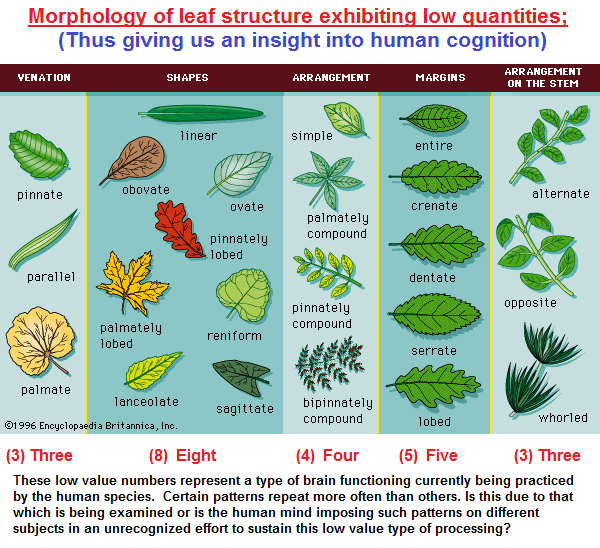
Now that I have the reader thinking along one track, let me revert them back to the discussion on the previous page regarding the feeding and excretion body plan models, generally described as single and double holes, though multiple holes or channels of the gut may be mentioned. The point to bring to mind is that if we start with the notion of feeding— and I am including the act of photosynthesis as well; an "opening" need not necessarily mean a hole as we term the mouth... unless we also include membrane permeability as a type of mouth-like feeding mechanism.
As well as with reconsiderations of what a "mouth" and feeding can refer to in a larger sense, we also need to apply this enlarged criteria to that of the anus, or 'excretion port', which need not necessarily be at the polar end from the mouth, nor be two separate holes. One hole can have multiple functions though research in this area consistently focuses on feeding and excretion, with a few dabbling in the area of sexual activity as well, as if the models of examination are replications of that behavior seen in humans, thus constituting a sort of anthropomorphic projection of interest and organization. In other words, even in the presence of multiple possibilities the multiplicity is converged into smaller organizational casts or busts to vantage what may be proclivities of perception tied to recurring cognitive orientations.
However, while dividing the research into a two-hole focus may seem logical, the third item of consideration is the processing of the food for nutrients and excretion. While we may not always refer to the process as a gut, such processes are essentially functioning in this manner. Yet, why have waste? Why didn't organisms evolve to be able to utilize all consumables like an omnivore? (Even though omnivores can't eat everything and they still have waste.) Why specialize? Though multiple types of foodstuffs may be taken in and used, thereby signaling a "plan" described as multiplicity, the organisms evolve into "picky" eaters, drinkers, "breathers", and how/when/where/what they excrete. Some, even those on the most simple developmental levels may well exhibit the behaviors of more complex animals in that they choose by way of smelling, touching and seeing certain colors, arrangements, movements... or not. Like the foregoing display of leaves, why so limited an array in overall number and combined numerically referencible quantities?
Are those life forms that we describe as specialists actually types of specialized generalists or generalized specialists we humans have not yet learned how to categorize because we are invested in the usage of recurring cognitive choices that resemble particularized types of food plates, bowls, cups, etc...? Do the patterns we are recurringly using describe specialized cognitive diets that all those animals which share our subject-environments indulge in the same types of feeding, starvation, and frenzies... like the feeding zones established in professional cycling that also established zones in which trash can be excreted or otherwise be fined? (I call the feeding zone the piranha zone.)



Multiplicity in development, whether viewed as an evolutionary sequence or not, occurs as an overall limited specialization characteristic of the Earth's environment and the constraints imposed by a recurring triplet code model of genetics that for one reason or another is sustained and is not itself evolving in terms of what may be thought of as a quadruplet, quintuplet, sextuplet, etc., coding system. Then again, an increased numerically identifiable coding mechanism may occur, is occurring, or has occurred along a different route than what we might presume to have occurred in a single, then double, then the triple coding signature model. I am not aware of a rule that nature must follow its own sequencing over and over again just because humans have cited a recurrence in multiple life forms extending millions or billions of years. Just because something has "always been that way" doesn't mean it is a rule-of-thumb that Nature is forced to abide by if it chooses other than the rules by which humans think Nature should play by... just like humans are free to develop their own rules for games created by corporations for distribution which contain rule books, pamphlets or written on the backside of a container in which a typically folded board and game pieces are kept.
Interestingly, in terms of humans sometimes imposing anthropomorphic ideas onto other animate or inanimate objects, does not always lead observers to think of this behavior as a cognitive repetition that needs to be catalogued along with other patterns in order to develop a greater insight into the limitations of assumed multiplicity being employed and sometimes described as creativity which assists in colonizing the presence of a recurring cognitive limit. Take for example the following youth-maturity-old age cycles attributed to geomorphology:
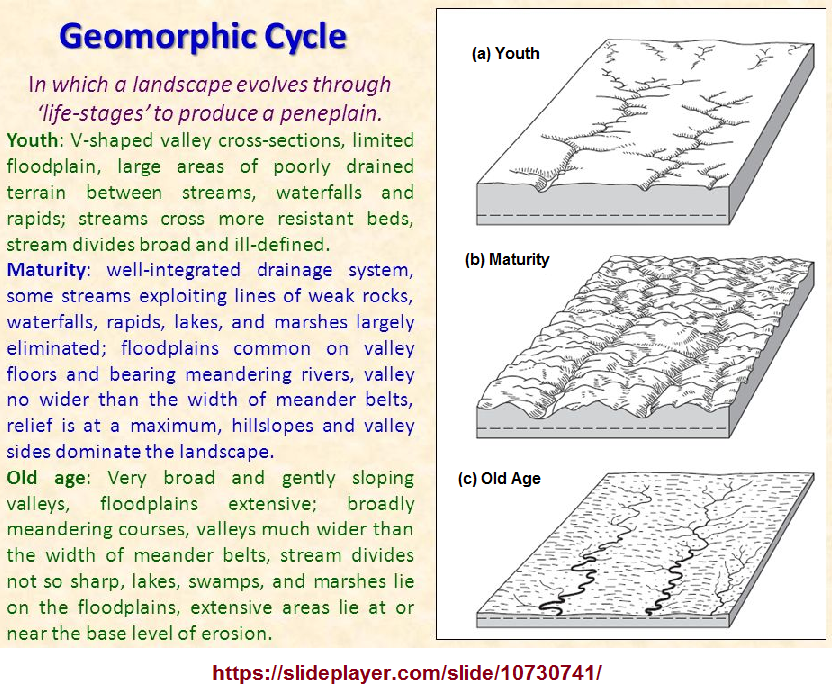
The usage of a model in which labeled stages of different developmental time periods is frequently adopted and seems rational and reasonable, though it poses the problem of expectation and comparison that, when differences are noted, they become incriminated or discriminated and most often sequestered into a non-alignment categorization, in order that a former category can either be held onto, or otherwise forced into a reformation... which may mean that a once held position of authority or superiority is demoted or given accentuations of refinement which permits it to be held in high esteem by those who persist in cherishing it as such.
Let us again refer to the origin of the mouth in which if we constrain the definition to that which closely resembles what we think of as a mouth with an opening into which nutrients flow through one type of wave or another (water waves, hand-to-mouth waves); we are not presented with an exploration for enlarging the consideration if we include the notion of solar, lunar, or other electromagnetic spectrum waves, such as we might describe in the midst of photosynthesis. If we say that plants and the earliest of life forms all had a type of mouth, due to an enlargement of our definition, the information which is thus added can become easily cumbersome and unwieldy for many a researcher who cognitively specializes on a small dietary regime of information and illustration.
Instead of mapping out the largest range of multiplicity that exists in order to chart its limitations, "no-fly" zones and territorial limits are imposed within fields of research by those who have staked a claim to a given piece of intellectual real estate and proposing to possess a title and deed because of how viscously they will protect their claim(s) and the quantitative quality of others they may get to join them and in return, enjoy the same piece of landscape with the endowment of whatever resources may come to be made available such as in a teaching position, grants, awards, book/speaking requests, etc... Hence the case for excluding the notion that the origin of the mouth occurred further back in evolution and perhaps even before evolution in a non-animate process which animate processes appear to reflect, though our human ego-centricity often flips this around and centralizes observations in accord with animate behavior.
If the mouth arose before the processes of the ectoderm and endoderm, then it may have occurred more than once, just as evolutionary events are sometimes cited as having occurred multiple times and are not related except in the idea of representing similar "mouth-like" attributes. While the information here: Gastrointestinal Tract - Mouth Development states that the mouth originated once and forms from the ectoderm and mesoderm. However, the information here states that Leaves with microscopic mouths:
Leaves with microscopic mouths
The keys to Jennifer's research are microscopic pores on the surfaces of leaves called stomata (singular: stoma) which plants use to "breathe." Plants need carbon dioxide, just as we need oxygen, and stomata allow the plant to take in carbon dioxide to perform photosynthesis. In the process of photosynthesis, the plant will chemically convert that gas into sugar, which the plant can use to fuel cellular processes, grow, and reproduce.
Stomata, which means "mouths" in Greek, do indeed resemble tiny mouths surrounded by swollen lips. The "lips" are actually individual cells (called guard cells) that can swell up to open the stomata or deflate to close them off. But why would a plant want to close off its stomata, effectively cutting it off from essential carbon dioxide? Well, plants also need water, and any time that a stoma is open, the plant loses water (along with oxygen, one of the waste products of photosynthesis). By closing the stoma when the plant has enough carbon dioxide, the plant can preserve its water and prevent itself from drying out.
The mouths of leaves: |
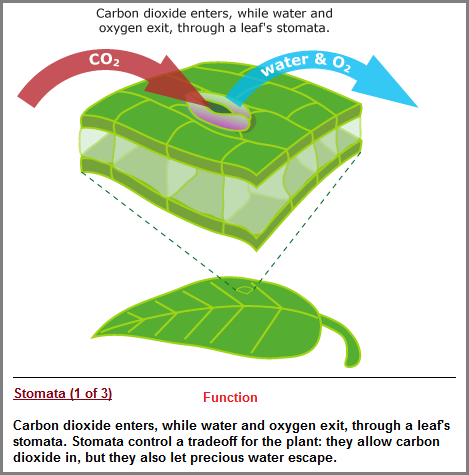 |
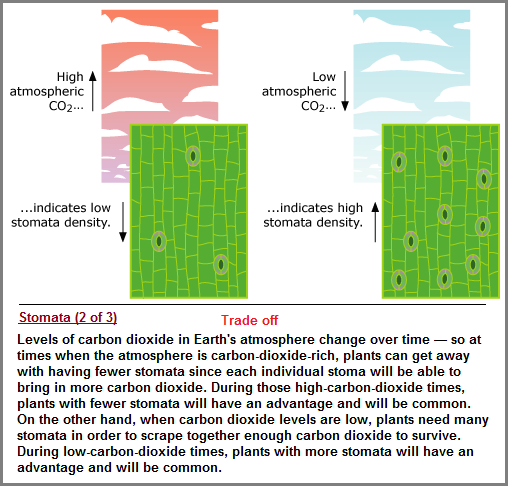 |
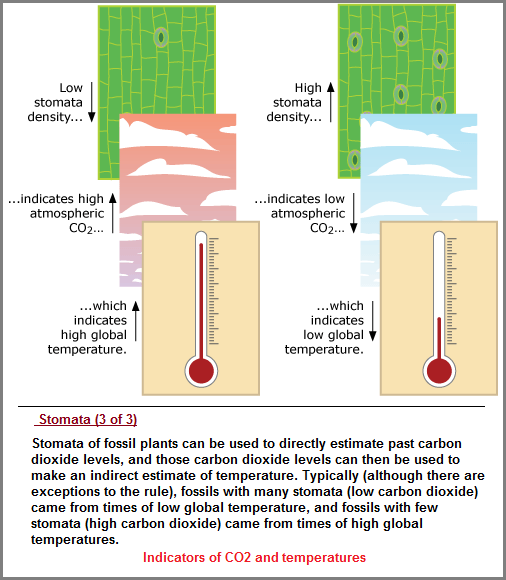 |
Here is the current model describing the origins of the mouth and anus:

While many researchers are consumed by the idea that the mouth and anus have a germ-layer embryological origin, what if there exists or existed a more simple basic pattern which preceded this more complex and elaborate model? If we think metaphysically in terms of the development of the Universe, does not the beginning, end, and development in-between suggest a mouth, anus, and gut? Could it be that humanity is but one type of gut bacteria inhabiting a larger gut bacterial carrier called the Earth and additional systems of "bacterial" arrangements in the forms of solar systems and galaxies? Are atomic particles the waste products of a consumption, digestion and excretion cycle, whether or not we polarize the mouth and anus and whether or not there is one hole or two holes, with a third hole being implied by the idea of three dimensions, three families of fundamental particles, three basic forms of matter (solids- liquids- gases... plasma), etc.?
While I was initially seeking out some image of the developing Universe as an illustration for the three mouth-anus-gut scenario, I came across the following image and couldn't resist adding my three-cents worth of commentary:
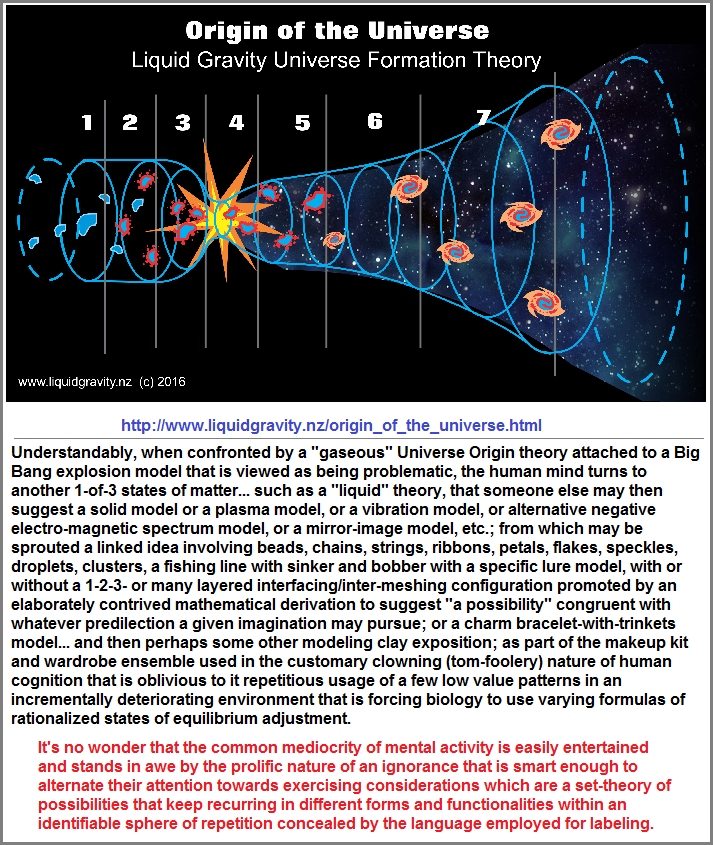
However, the idea of a "liquid gravity" bodes well in terms of being viewed as gastric "juices" being used for the medium by which matter became consumed in the early stages of the Universe's development. It, along with dark matter can also be used to describe the medium by which the food stuffs of atomic matter have become mixed into a porridge which stewed up additional forms of structures that have already been placed on a timeline:
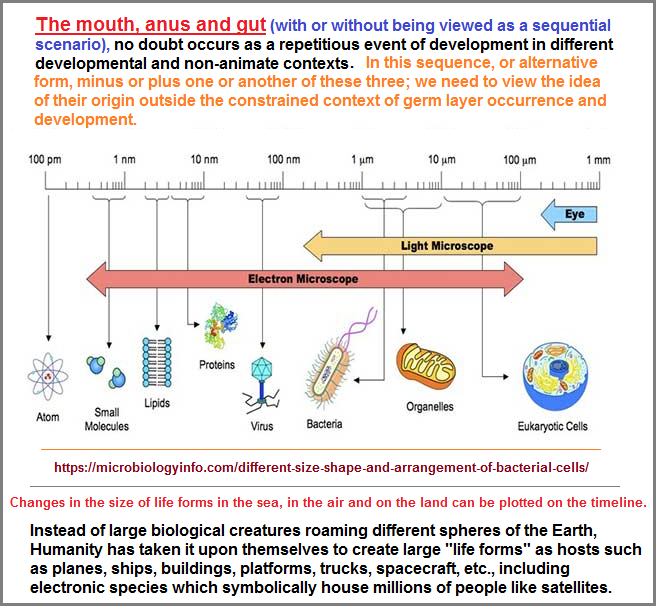
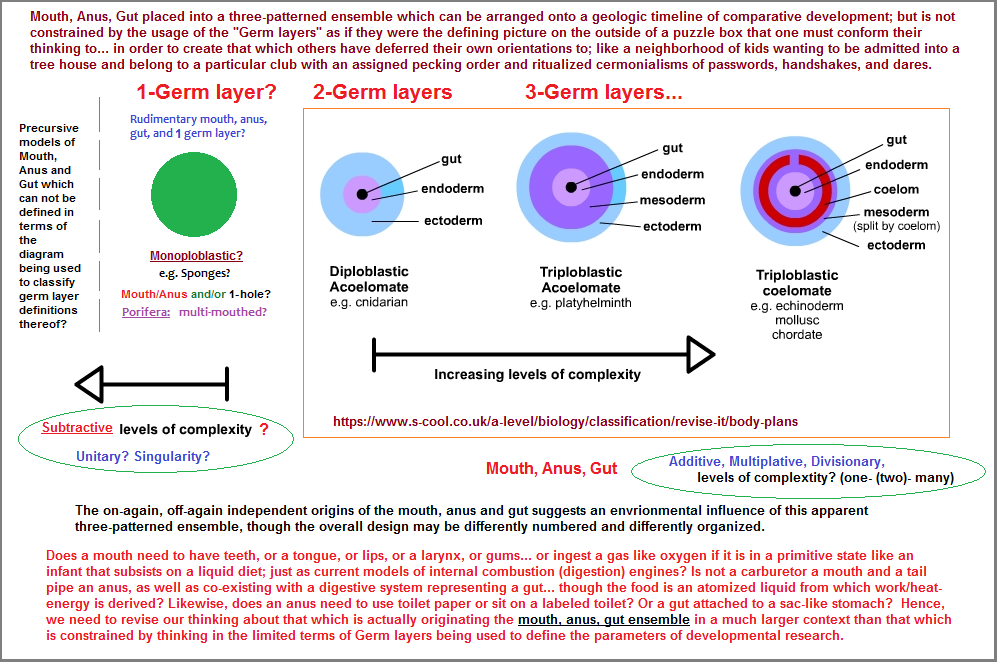
Origination date: Monday, October 7th, 2019... 3:34 AM
Initial Posting: Wednesday, October 9th, 2019... 1:54 AM
Updated Posting: Friday, January 20th, 2023... 12:18 PM
Herb O. Buckland
herbobuckland@hotmail.com